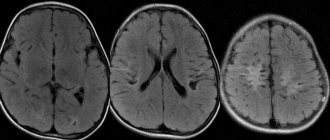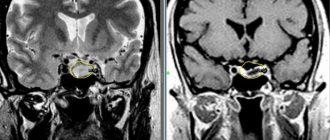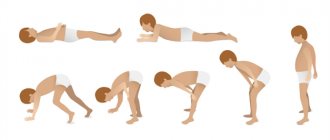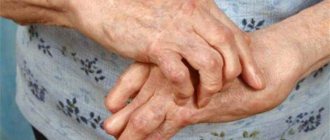.
Despite the fact that the concepts of dependence and codependency have a common root, their meaning is completely different. Most experts in the field of psychology are convinced that codependency is a mirror image of addiction. Some psychologists argue that these terms can be used interchangeably. You can often hear the opinion that the relatives and friends of such people are codependent. It is not always so. As with any disease, there is a high chance of infection. Sometimes we cannot recognize whether we are codependent. Therefore, it is important to understand what chemical codependency is and how it differs from simple codependency.
Basic concept
What is codependency? This concept is practically unfamiliar to the average person. The term “codependency” arose as a result of studying the nature of chemical addictions, as well as their impact on people and the impact that such a disease can have on others.
To make the above more clear, let's look at specific examples. So, an alcoholic is dependent on alcohol. A drug addict cannot live without drugs. The player is not able to pass by the casino. But these people have relatives and friends. They, in turn, are dependent on the same alcoholic, gambler and drug addict.
Based on life experience, each of us understands that people, albeit to varying degrees, are still dependent on each other. What if one of the family members is unable to live without drugs and alcohol? In this case, he not only destroys relationships with his loved ones, but also makes them codependent. In this case, the prefix “co-” indicates the combination, compatibility of states and actions. Thus, it becomes clear that dependence and codependency are different concepts. What is their main difference?
Psychological dependence and chemical dependence: men and women
In men, further development occurs more often like this: first, the man tries to separate from his parents and become independent. But he begins to feel latent dissatisfaction and anxiety: after all, the “rescuers”, “controllers”, those who are worried and whose attention is constantly focused on him, are no longer there.
And then sometimes alcohol, drugs, a game or some other virtual reality comes into his life, captivating him completely. So he can again descend into a state of deep childhood - when they again save him, “pull him out” and take care of him.
By this age, some mothers are even ready to give up on their child, surprised that he does not want to grow up. But more often than not, he can no longer do it without professional help. After all, love is strongly associated with psychological dependence on his mother, and a sense of security is associated with the constant presence of a person controlling and caring for him.
Some sons are sometimes unable to part with their mother, and often it is the codependent relationship with her that prevents the sons from building their own family. Some find the strength to leave their parents' home and find a permanent companion, but they choose a woman as a partner who would be a substitute for their mother. Namely, she would behave the way her mother always behaved.
Most often, by the time they grow up, such men have a full set of addiction and codependency . The need to use psychoactive substances, to escape reality and the need to build a relationship with a woman similar to his relationship with his mother.
At the same time, games, drugs or alcohol help him relieve internal anxiety inherited from his mother, or rather, temporarily suppress it, make it invisible to himself, and stop concentrating on it.
All this, of course, happens unconsciously. At a conscious level, as a rule, this is indicated by the phrase “I need to relax” or “I’m bored with life” or “life has no meaning.”
But with all attempts to offer a person meanings, solutions for relaxation or obtaining new emotions, the addict protests: after all, if he switches to self-sufficiency, he will lose his sense of integrity, which for now is only achievable for him through merging with another, with someone who will be there for him tightly bound by fears and anxiety, who will be completely focused on him.
Women are more likely to fall into the trap of psychological dependence. She often needs not just a man, but someone who cannot do without her, who will constantly confirm to her that she is needed. And, as a rule, these are men who are prone to addiction. After all, they “will be lost without her,” “they won’t cope without her,” etc.
The scheme here is the same: a woman tries to at least temporarily eliminate the anxiety implanted by her mother, and most often actualizes it through the “rescue” of a man. And thereby creates for himself a feeling of integrity, which was previously experienced in a relationship with an anxious mother.
Dependence and codependency complement each other in this system: a man’s dependence makes him helpless, not sufficiently independent and in need of “supervision” from a woman.
And a woman prone to psychological dependence cannot imagine a relationship with an independent and independent man - because then she will not feel so needed, there will be nothing to constantly worry about and worry about. And this is exactly how she is used to perceiving and showing love.
It happens, of course, the other way around, when a woman becomes dependent, and a man takes on the role of a rescuer. But in our country, the classic scheme is more often relevant, in which a woman “saves” an addicted man.
Differentiation of terms
Dependency and codependency have their own characteristics and traits. How are they different from each other? This is worth talking about in more detail.
Everyone knows that in the modern world people are constantly exposed to stress. To relieve it, there are many ways to relax and relieve tension. This could be sports or music, collecting or reading, the Internet and much more. The use of any of these methods is not prohibited or unnatural. After all, by maintaining psychological comfort, life becomes full-blooded and saturated with communication and emotions. But this does not apply to those cases when one of the methods used for relaxation begins to dominate over others, gradually pushing real life into the background. In this case, addiction arises, which is nothing more than an obsessive state of irresistible attraction to someone or something, which is also almost impossible to control. A similar state takes over a person’s life. Everything else becomes simply uninteresting for him.
Today, addiction can arise not only from chemical compounds (alcohol, tobacco, drugs, etc.). It can also occur from gambling and overeating, extreme sports, etc.
What is codependency? This term refers to a specific state characterized by intense absorption and preoccupation with the problems of another person. The result of such dependence is a pathological condition that affects all other relationships. A codependent can be called someone who at some point became faint-hearted and allowed another person to completely influence their life through their own behavior. Every day of such people and all their actions are aimed at exercising control over those who cannot live without alcohol, drugs, gambling, etc.
Space for healing life. Personal website of Elena Barymova
In our stressful times, people resort to different ways to relax and relieve fatigue, and cope with stress in different ways. For some it is sports, for others it is food, music, reading, collecting, the Internet, sex, etc. And it’s normal when these ways of maintaining psychological comfort make life full-blooded, rich in emotions and communication. If one of the methods becomes dominant, relegating the rest of real life to the background, we can talk about the emergence of special behavior, which experts call addictive.
What is addiction? It can be defined as an obsessive state of irresistible attraction to something or someone, which is practically uncontrollable. As addiction progresses, it completely takes over a person’s entire life, making other aspects of it at first uninteresting, and then forcing them to give up everything to satisfy it. The dose consumed is steadily increasing. With addiction, a person will fall into an altered state of consciousness, which allows him to escape from the problems of real life and be in a state that is comfortable for him.
Nowadays, addictive behavior includes not only chemical dependencies (alcoholism, smoking, drug addiction and substance abuse), but also overeating, chocolate abuse, gambling, excessive passion for extreme sports, “workaholism”, sexaholism, etc.
Each dependency has its own characteristics, but there are also several common features:
• All of them develop gradually, and this is why they are dangerous, since they do not cause alertness “there is something wrong with me!” At stages 1-2, a person rarely admits that he has an addiction. • Over time, there is an increase in the dose (chemical dependencies) or the time a person spends on them. • Addictions lead to the displacement of other interests in a person’s life (this could be work, career, family, hobbies, entertainment, communication with friends, etc.). • Gradually, a person loses control over his addiction, first in isolated cases, then constantly. He simply cannot refuse a drink, a “dose”, an extra roll, another cup of coffee, another intervention in someone else’s life due to codependency. • When trying to give up addiction, a person experiences painful psychological discomfort and/or physical ailment, which forces him to return to addiction under various pretexts. • All addictions change the human psyche, destroying it, reducing interest in life and other people, impoverishing emotions, reducing abilities and making thinking difficult. • An addicted person develops “defensive behavior” that helps him maintain his addiction, despite the fact that it destroys his life. The person himself is the last to learn about the fact of his addiction, and, as a rule, when it has led to some serious consequences for him and his family.
Codependency
Codependency is a specific condition that is characterized by intense preoccupation, preoccupation, and extreme dependence (emotional, social, and sometimes physical) on another person. Ultimately, such dependence on another person becomes a pathological condition that affects the codependent in all other relationships. This state of codependency is characterized by:
1) denial as a form of psychological defense, delusion, self-deception; 2) compulsive actions (unconscious irrational behavior that a person may regret, but still acts as if driven by an invisible inner force); 3) loss of control; 4) frozen feelings; 5) low self-esteem; 6) health problems associated with stress.
According to M. Peaty, one of the most famous experts on codependency, “a codependent is a person who has allowed the behavior of another person to influence him and is completely absorbed in controlling the actions of that person. The important thing to understand here is that the problem is not with the other person, but with him or her, allowing the behavior of another to influence him, and also trying to influence the other. Therefore, all codependent people have similar intrapsychic symptoms, such as control, pressure, obsessive states and thoughts, low self-esteem, self-loathing, guilt, suppressed anger, uncontrollable aggression, obsessive helping, focusing on others, ignoring one’s needs, communication problems, isolation, tearfulness, apathy, problems in intimate life, depressive behavior, suicidal thoughts, psychosomatic disorders.
You are codependent if:
• You feel dependent on people, you have a feeling of being trapped in humiliating and controlling relationships; • See the meaning of your life in your relationship with your partner, focus all your attention on what he is doing. • You use relationships the way some people use alcohol or drugs, becoming dependent on the other person and thinking that you cannot exist and function independently. • If you tend to perceive other people's problems as your own, which indicates that you are not able to determine your psychological boundaries. You don't know where your boundaries end and where other people's boundaries begin. • You have low self-esteem and therefore have an obsessive need for constant approval and support from others in order to feel that everything is going well for you; • Always try to make a good impression on others. If you often try to please other people without trusting your own views, perceptions, feelings or beliefs. • You listen to other people's opinions and do not defend your own views and opinions. • You try to become necessary for other people. If you are willing to go out of your way to do something that you think only you can do for other people, when in fact other people can do it just fine for themselves. • Playing the role of a martyr. You suffer, but you do it nobly. You are willing to put up with situations that are intolerable to you because you believe that it is your duty to do so. • You are confident that you can control other people and are constantly trying to do this, without admitting to yourself that you never succeed “perfectly.” • If you don't understand what's going on with your feelings, or don't trust them, and only express them when you think you can afford it. • If you are gullible and often find yourself in situations in life where other people deceive you or do not meet your expectations.
Codependency is the mirror image of addiction. The similarities between addiction and codependency are seen in the fact that both conditions: lead to gradual physical, mental, emotional and spiritual degradation; and during recovery they require a systemic shift both physically and psychologically. Codependent people belong to the risk group of people prone to addiction.
For clarity, let us present the parallelism of manifestations of both states in the form of a table.
| SIGN | ADDICTION | CODEPENDENCY |
| Consciousness of the object of addiction | The thought of alcohol or another substance dominates the mind | The thought of a loved one suffering from chemical addiction dominates the mind |
| Losing control | Over the amount of alcohol or other substance, over the situation, over your life | Over the patient’s behavior and over his own feelings, over his life |
| Denial, minimization, projection | “I’m not an alcoholic”, “I don’t drink very much” | “I have no problems”, “my husband has problems” |
| Aggression | Verbal, physical | Verbal, physical |
| Predominant feelings | Heartache, guilt, shame, fear | Heartache, guilt, shame, hatred, resentment |
| Growing tolerance | The tolerance to increasingly larger doses of substances (alcohol, drugs) increases | Increased tolerance for emotional pain |
| Hangover syndrome | To alleviate the syndrome, a new dose of the substance to which there is an addiction is required. | Having broken off a relationship with an addicted person, codependents enter into new destructive |
| Intoxication | A frequently recurring condition resulting from the use of a chemical substance | The impossibility of calmly, judiciously, i.e. think soberly |
| Self-esteem | Low, allowing self-destructive behavior | Low, allowing self-destructive behavior |
| Physical health | Diseases of the liver, heart, stomach, nervous system | Hypertension, headaches, cardiac neurosis, peptic ulcer |
| Associated mental disorders | Depression | Depression |
| Cross-dependence with other substances | Dependence on alcohol, drugs, tranquilizers can be combined in one individual | In addition to dependence on the patient’s life, dependence on tranquilizers, alcohol, etc. is possible. |
| Attitude to treatment | Refusal of help | Refusal of help |
| Conditions of recovery | Abstinence from chemical substance, knowledge of disease concept, long-term rehabilitation | Detachment from a person with whom you have had a close relationship for a long time, knowledge of the concept of codependency, long-term rehabilitation |
Chemical dependence is often called a disease of irresponsibility. The patient is not responsible for the consequences of using the chemical substance or for the destruction of his health; he is also irresponsible towards other family members and does not fulfill parental responsibilities. Codependents only outwardly give the impression of overly responsible people, but they are equally irresponsible to their condition, to their needs, to their health and also cannot fulfill parental responsibilities. Health problems begin when codependents, in order to avoid painful feelings of guilt, shame, irritation, and hatred, begin to ignore them. Disturbances in the emotional sphere caused by blocking one’s feelings lead to the fact that they begin to “react” inside the body, leading to various dysfunctions, spasms of blood vessels and smooth muscles of internal organs. Under the influence of a long-term stressful family situation, codependent people “transfer” their conflicts and emotional stress to their own body. Ultimately, this leads to the development of so-called psychosomatic disorders, or diseases: bronchial asthma, arterial hypertension, coronary heart disease, duodenal ulcer, skin diseases, etc. The appearance of psychosomatic diseases indicates the progression of codependency. Some experts believe that if codependency is not treated, it leads to death due to the development of severe psychosomatic diseases.
Conventionally, we can distinguish 5 phases of codependency, which are especially pronounced in those who live with addicts. • Denial or exaggeration phase. • Concern phase. • Adaptation phase. • Exhaustion phase. • Phase of deep crisis and rejection.
In the end, codependency always ends in the breakdown of relationships, but before this happens, the codependent person will turn his life and the lives of those around him into a complete nightmare. By their attempts to save and control, codependents themselves deprive the dependent family member of responsibility for “using.” With this approach, the addict does not reap the results of his actions, in fact turns into a child, and does not bear any responsibility for his “use.” The codependents take full responsibility for it, thereby relieving the dependent of the awareness of the need to stop. It turns out that without wanting it, codependents make things worse for themselves and for the one they are so persistently trying to save and control.
According to psychologists, more than 90% of the adult population suffer from codependency, without recognizing it or trying to change anything... Codependency occurs when two people, seeking in each other what they feel is missing in themselves, come together to form one whole person. At the same time, each partner feels that he is unable to fully realize his capabilities without the help of the other. This interferes with the personal growth and development of both people and reduces the quality of life for everyone. Over time, one of the partners (the one who “grows up” faster) gets tired of the ineffective relationship and tries to change things.
Patterns of codependency continue to recur. The natural way for humans to learn is to repeat what we are trying to learn over and over again until it is learned. This is the reason for the repetition of codependency patterns. When a codependent person ends his relationship with a sick or dependent person, he often finds another person with similar problems and repeats the behavior patterns characteristic of codependency with a new person. These behaviors, or coping mechanisms, will persist throughout the codependent's life unless the person consciously changes their behavior.
With all its dysfunctional symptoms, codependency is actually a progressive healing process. Each of us has a natural drive for healing and closure. We just need to cooperate in this healing process to make it work.
When people understand the underlying causes of codependency, have the tools they need, and receive the support they need, they can heal and eliminate the negative impact codependency has on their lives.
A systematic approach to healing is required. Since all parts of our social system support codependency, it is necessary to take both a systematic and individualized approach to treating it. Therapy with couples, families, and groups can be effective in helping people break free from codependency.
To recover, it is necessary to understand what is actually in the sphere of human capabilities, and what a person is able to control. The main thing is to make sure that most of the world around us lies outside the sphere of influence of our will and is not subject to it, and to accept this. Only when a critical moment comes in a person’s life, when it becomes clear to him that all attempts to control events are doomed to failure, does recovery begin. It is important to say that recovery and restoration are possible in any phase of codependency.
Olga Grinko
Signs of codependency
Someone whose life is completely subordinated to a loved one who is unable to give up an addiction, as a rule, has low self-esteem. For example, a codependent woman believes that a man will love her only if he is surrounded by care and attention. In such couples, the spouse behaves like a capricious child. Sometimes he allows himself whatever his heart desires - he doesn’t work, drinks alcohol, insults a woman and cheats on her.
A codependent person also experiences self-hatred and constantly feels guilty. Often, anger arises in the souls of such people, manifesting itself in the form of uncontrollable aggression. Codependents are so focused on the lives of their loved ones that they constantly suppress emerging emotions and desires, without paying any attention to their own physical and psycho-emotional state. Such people generally focus on family problems and do not want to communicate with others. This is the mentality of Russian families. It is not customary among our people to “wash dirty linen in public.”
Very often, codependents lack sexual relationships or have problems in their intimate life. Such people are in most cases withdrawn, constantly in a depressed state. Sometimes they torture commit suicide.
What is codependency? It's a way of thinking and living. Codependency in alcoholism and drug addiction leads to the fact that people begin to perceive this world distortedly. They deny the problem in their family, constantly engage in self-deception and exhibit illogical behavior.
Causes of the phenomenon
To avoid serious consequences and return to a harmonious life, the disease must be treated. Codependency in alcoholism is a web that drags the patient in. After a certain time, if treatment measures are not taken, the possibility of eliminating the pathology is practically reduced to zero.
To get rid of a disease you need to accept it and want to be cured. To do this, you can read the book by V. D. Moskalenko “Codependency: characteristics and practice of overcoming.” In it you can find many useful tips that will help you cope with pathology.
In addition, to cope with the disease, you need to consult a psychoanalyst. A highly qualified specialist will perform the following actions:
- conduct a personal conversation;
- will help you look at problems in family life from a completely different perspective;
- prescribe group therapeutic activities;
- will give recommendations on how to restore emotional balance;
- will teach you how to effectively cope with stressful situations.
The patient must follow all the advice of the psychologist. It is very important to realize your problem and return to real life. Although it's not quite easy.
Many people tend to feel disgusted when the diagnosis “alcohol addiction” is mentioned. But there is another category of people who begin to feel remorse and guilt for the fact that they are more successful and do not suffer from this disease.
There is a desire to immediately help and give all your strength to overcome the misfortune of another person, even, sometimes, to the detriment of your own interests and life priorities.
Codependency on an alcoholic more often manifests itself in women, who are by nature emotional, vulnerable, and caring. The disease targets wives, mothers, and daughters. The exception is the husband of a drunkard woman.
The root of evil is an alcoholic in the family. The reasons for codependent relationships in an alcoholic family lie in the character, lifestyle, and the stress of being caught in the bondage of the disease. Factors that provoke codependency in alcoholism:
- Loss/ignoring opportunities for self-realization.
- Rough, prolonged psychological pressure from the outside.
- Violence in childhood.
- Serious shock or upheaval.
Who is a codependent?
Who is in the category of those people who completely devote themselves to the problems of a loved one? Codependents include:
- people who are legally married or in a love relationship with those who are sick with drug addiction or alcoholism;
- parents of an addicted person;
- children of those who are sick with drug addiction or chronic alcoholism;
- people who grew up in an emotionally depressing environment;
- suffering from addiction, but in a post-morbit or pre-morbit state.
Harm from codependency
What's happening to him? Why doesn't he want to change his behavior? After all, you need so little: just stop drinking alcohol and limit its quantity. This is what families think, believing that their loved one simply drinks too much, that his thirst is just a bad habit.
In fact, we are talking about a serious illness: psychophysical dependence on ethyl alcohol - alcoholism. The addict himself cannot cope with it; he needs qualified medical assistance.
Female codependency
Often, representatives of the fairer sex believe that they should love and perceive a man exactly as he is. This is how codependency arises in relationships. As a rule, this happens when a woman is terrified that she will be left alone. Sometimes she suffers insults and humiliation, continuing to be in a vicious circle of such relationships. It is codependent women who utter the following phrase: “He doesn’t need me.”
Such relationships can last for years. However, they do not bring happiness to either the man or the woman who loves him. The wife tries to extinguish any conflicts that arise in the family, constantly takes care of her significant other, feeling like a “savior”. Continuing to closely perceive the man’s problems, she eventually loses the distinction between her own “I” and the life of her husband. This is why very often you hear absurd things from codependent women. These are, for example, phrases such as: “we drink” or “we shoot heroin.” Of course, ladies in this case do not become alcoholics or drug addicts. It’s just that all their interests and attention are focused only on a loved one.
Codependency in a relationship does not allow a woman to adequately perceive compliments and praise. Having low self-esteem, such ladies very often depend on the opinions of other people. At the same time, they simply do not have their own. And only in their desire to help another person are codependents able to feel needed and significant, believing that their life is filled with special meaning.
Codependency treatment
Why is it so important to recognize codependent relationships in the family of an alcoholic? Doctors, narcologists, psychologists, and psychiatrists who treat patients with alcoholism argue that success is only possible if the codependent family member also undergoes psychological therapy.
Practice shows that people around a drunkard do not understand the problem and often do not want to admit the truth about their no less serious codependency. In this they resemble alcoholics: after all, they also do not admit that they are sick.
Codependency is similar to alcoholism - overcoming the disease is difficult. The problem is that codependents, like alcoholics, do not recognize deviations, so they do not try to get rid of the disease.
When an alcoholic is confident in the harmlessness of drinking alcohol, the codependent evaluates his behavior as natural concern for a loved one, a desire to help and support. Because of this, recognizing the presence of a disease is the first step to solving the problem.
Judging by the fact that you are reading these lines now, victory in the fight against alcoholism is not yet on your side...
Have you already thought about getting coded? This is understandable, because alcoholism is a dangerous disease that leads to serious consequences: cirrhosis or even death. Liver pain, hangover, problems with health, work, personal life... All these problems are familiar to you firsthand.
Psychological help
How to get rid of codependency in a relationship? There are many original techniques for this. The author of one of them is Sergey Nikolaevich Zaitsev. You can become familiar with this technique by purchasing a brochure entitled “Codependency - the ability to love.” This work is a kind of manual for loved ones and relatives of alcoholics and drug addicts. The benefit is intended to provide psychological assistance to codependent people and correct their behavior.
S. N. Zaitsev believes that drug addiction and alcoholism are nothing more than a “monster” standing on three legs. The first of these supports is found in the sick person. The second represents a macro-society, that is, a not entirely healthy society that adheres to its unwritten laws. The third support is the microsociety formed by the family of an alcoholic or drug addict. After all, sometimes erroneous judgments and wrong views of parents lead to the fact that the disease settles in the soul and body of their son or daughter. And then drug addicts or alcoholics begin to parasitize on family feelings.
Those who suffer from hyper-love and excessive emotional involvement in the life of a loved one who is chemically dependent should read the book “Day by Day from Codependency.” Its author is Melody Beatty. The book is written in the form of a diary, containing reflections on how to maintain prudence and calm when under the pressure of difficult circumstances.
It is worth noting that Melody Beatty was herself an addict and codependent in the past. She was able to overcome her problems on her own, after which she began to actively help people in acquiring their “I”, as well as in ridding their loved ones of drugs and alcoholism.
Signs of the condition
The codependent himself does not recognize his problem, and symptoms and signs are noticeable almost immediately:
- Excessive concern for the wife or husband, unreasonable anxiety, constant control;
- Use of “we”, “our” in speech;
- Making decisions for the wife or husband;
- Constant control, reaching the point of fanaticism;
- Search for new treatments for alcoholism.
To make it easier to get rid of codependency, it must be identified in time. This is much more difficult to do than to determine alcoholism.
Signs of alcoholism can be noticed immediately; as for alcohol codependency, the situation in this matter is much more complicated. A healthy person reasons adequately, seeks answers to all questions and asks for help in any situation.
If a person is codependent, then he automatically becomes emotionally ill. Over time, he develops a number of symptoms:
- The desire to create favorable conditions for the alcoholic in any situation;
- Creating a “wall” that will help isolate you from others;
- Ignoring drunkenness and its consequences - even violence, swearing and beatings;
- Making sure drinkers feel comfortable;
- The desire to keep the husband away from his “bad” friends in order to preserve the relationship;
- Constant searches and destruction of alcohol reserves hidden by the husband;
- The desire to be useful and necessary for an alcoholic;
- No need for outside help;
- Poor self-esteem and lack of self-confidence;
- Attempts to take responsibility for another person.
All these signs indicate the presence of serious problems, and a person will not be able to see and admit on his own that his world has been destroyed.
When difficulties arise, a person shares his plans with loved ones, looking for ways to solve the problem. In the case of codependency on alcoholism, the situation is diametrically opposite - the patient does not realize the tragedy of the situation.
The state of codependency begins with the treatment of a husband’s hangover during a period of heavy drinking, paying off the debts of a patient with alcoholism, and cleaning the apartment after a drunken brawl.
12 Step Program
Codependency can be observed in families with unhealthy emotional backgrounds, as well as in very strict communities where religion comes first. A similar phenomenon occurs in cases of living together with a dependent person for more than 6 months.
Freeing yourself from codependency will eliminate the loss of your own self, constant dissatisfaction and depression, a feeling of panic and many other problems that such a love phenomenon brings with it.
How to get rid of codependency in a relationship? “12 Steps” is a program that will allow the patient to gradually come to the realization that his inner freedom is a great value. At the same time, he begins to understand that the pain that comes to him almost constantly is not at all a necessary sign of love. Quite the contrary.
How to get rid of codependency, going through 12 consecutive stages?
What happens to family relationships as a result of working with an addicted client?
What does “working with a dependent client for quite a long time” mean? The duration of work on growing an independent person from a dependent one can be from nine months with weekly meetings. In difficult cases, meetings may be scheduled twice a week, especially at the beginning of therapy.
Gradually recreating the stages of development disrupted in childhood, with successful work, the psychotherapist helps to recreate the personality traits and abilities. When working with a feeling of shame, he can structure the work so that the person accepts himself in his condition; this is the starting point of recovery in addiction psychotherapy. In working with feelings of guilt, it will miraculously help the client learn to separate his needs and the needs of another person.
When a person who is dependent begins to understand that in this relationship he can no longer hope that he will be accepted as he becomes and will not be given what he needs - one of the most difficult moments in psychotherapy begins. The client, as it were, begins to separate from the system that kept him in a dependent state, and, simply put, leaves the family. This is quite a heavy responsibility for a psychotherapist. As a result of the work, a personality was recreated that no longer satisfies the needs of an interdependent family system. In this case, in the absence of the spouse’s desire to accept the changes that have occurred with the partner in therapy, in his disagreement to engage in his own therapy with someone else, a natural breakdown of the relationship occurs.
It turns out that the psychologist or psychotherapist “ruined” the family? No, the breakdown of a codependent relationship occurred as a result of changes and responsibility for the decision lies with the spouses.
Farewell to illusions
So, let's begin the first stage of liberation from codependency. And this step of overcoming the problem involves saying goodbye to the illusion of complete control over the situation. Recognizing the danger of the situation that has arisen allows us to transfer it from the unconscious, which is beyond a person’s control, into consciousness. Only then can the problem be solved using common sense. Thus, the first stage of codependency treatment involves gaining sanity.
When going through this step, the patient gains awareness that the situation in which he finds himself cannot be changed independently. This will require the help of experienced mentors or qualified psychologists. A mandatory start for recovery should be:
- willingness to change;
— abstraction from the need that has completely captured the mind;
- willingness to evaluate yourself from the outside.
Finding the Source of Power
How to get rid of codependency in alcoholism or drug addiction? After a person fully accepts his inability to control the situation, he must determine the source of strength that would allow him to stay afloat. What could it be? Such a source is individual. That is why each patient must determine it himself. Faith in God can heal someone. Someone is able to eliminate the problem by completely devoting themselves to the work they love. For some, solid ground will be his family and friends or the recommendations of attending physicians who take part in the fate of their patients. By taking the second step, a person should gain hope for a complete cure for the disease.
How to get rid of codependency
Ways to combat alcohol codependency are simple and simple:
- You need to accept your loved one’s illness and understand that your efforts will be unsuccessful until the patient himself wants to cure himself of alcohol addiction;
- Recognize your codependency and realize the need to get rid of it;
- Consult a psychologist who will give additional advice to solve the problem.
If a psychologist has diagnosed codependency in alcoholism, how to get rid of the problem is decided together with a narcologist and psychotherapist.
Treatment of a codependent is impossible without simultaneous treatment of an alcoholic.
At my wife's
If the wife is a codependent in the family, then overcoming the problem consists of the following actions:
- the woman needs to admit that her husband is an alcoholic and needs treatment;
- she should not justify her husband’s behavior by citing moments of his sobriety as arguments;
- you need to spend time with your children, and not try to persuade your spouse to change his mind;
- you cannot save your husband from hangover syndromes with alcohol;
- you cannot let yourself go and dissolve in the desires of the drinker;
- after a drunken brawl, you need to behave normally and not try to help the alcoholic by defending him at work or in a public place.
To get rid of the disease forever, the wife needs to make a firm decision. This could be forced treatment of a dependent spouse if he does not admit that he is sick, or divorce.
You should not justify the desire to stay close to the sick, the presence of children and a difficult financial situation. An alcoholic will not improve if he does not admit the presence of the disease and does not want to be treated.
A woman will need consultations with a psychotherapist to understand and accept the fact of codependency.
Remember: if stress is too long, the appearance of psychosomatic disorders is inevitable. The compensatory mechanisms of the human body are not limitless: suppressed feelings, negative emotions, mental pain, internal suffering result in tangible health problems.
The complaints of a codependent with alcoholism at first seem ephemeral, groundless, and are not reflected in analysis charts. Gradually the symptoms become clear.
Typical psychosomatic diagnoses of codependents are bronchial asthma, hypertension, psoriasis, migraines, ulcers, chronic insomnia. Sometimes a person turns from a codependent into an alcoholic, systematically drinking alcohol, trying to dull the pain and dissatisfaction.
Getting rid of codependency is as difficult as curing an alcoholic. Treatment begins with recognition of the disease. Next, a loved one who is codependent on alcoholism should contact a specialist to go through the stages of therapy sequentially:
- Psychotherapeutic conversations. The goal is to eliminate pseudo-sacrifice, change the codependent’s view of the family, and pay attention to one’s own desires and needs. It is possible to break off relations with a slave of alcoholism.
- Group therapy sessions. The feeling of community with codependent people who have experienced the same problems calms, inspires, and relieves feelings of isolation.
- Mastering anti-stress techniques. The problem will not go away with the wave of a magic wand, so stress resistance skills will definitely help a codependent with alcoholism of a loved one.
The intervention of a narcologist is mandatory - competent anti-alcohol therapy, the work of a codependent with a psychologist will give a positive result.
It is more advisable to start treatment before the critical stage, when the unnatural situation of codependency is perceived as normal. Separating your own personality from someone with alcoholism is an important stage of working on yourself.
Changing the codependent's worldview is the second step. The support of others, positive emotions, shopping, travel, pleasant, useful reading are important.
There are no cures for codependency in alcoholism - they are in the patient’s head. It requires patience, willpower, and a willingness to radically change the vector.
Recovery symptoms:
- Open discussion of the problem of codependency in alcoholism with others.
- Taking tough action rather than empty sympathy.
- Reluctance to cover up the drinker’s actions from law enforcement officers and colleagues.
- Categorical rejection of the antics of an alcoholic.
Decision-making
What should be the third step in overcoming codependency? At this stage, a person is obliged to make a firm decision for himself and constantly follow it. Anyone who has relied on a certain source of power will need to comply with its rules of the game. This stage has its own secret. It consists in the fact that submission to one force or another should not lead to the formation of a new codependency. It is a conscious decision made by a person that allows him to take specific steps.
If the patient's will weakens, he can use a kind of crutch. They can serve as the Bible or doctors’ instructions, a list of job responsibilities, etc.
Reasonable submission to objective conditions, and not to the momentary mood of another person, will allow the codependent to take time out and serve as a kind of island on which he must look back at his previous life and give it an objective assessment.
Repentance
The feeling of guilt that will certainly arise in the patient during ruthless introspection must necessarily be directed outward. Otherwise, continuing to remain inside the patient, it will cause a deterioration in his mental state. This is usually called repentance.
This step is the essence of the fifth stage of getting rid of codependency. Its passage allows us to identify the reasons that led to the formation of negative attitudes. Accepting them will liberate a person. After all, mistakes are securely sealed in the past, and understanding their origins will make it easier to eradicate this evil.
Compensation for damage
This stage of getting rid of codependency involves analyzing the current situation. After all, it is clearly not enough to receive forgiveness. It is necessary to think about who suffered from the actions taken in order to compensate for the damage caused. And only the coming feeling that debts have been paid and guilt has been smoothed over will allow people to build comfortable relationships with others, unencumbered by uncertainty and fear.
When going through this step, it is recommended to remember those positive hobbies that have faded into the background due to the onset of addiction. Next, they should be reintroduced into the list of your daily interests, which will allow you to recreate an independent and holistic system of positive life priorities.












